Pumpkin (Cucurbita) belongs to a very specific family of vegetables. It is a plant of the Cucurbitaceae family, which is widely used in cooking, and the same as in the treatment of various diseases. The stem of the pumpkin trails quite far, reaching lengths of up to 4-5 meters. Pumpkin leaves are hollow, with long stems and large textures. Usually, pumpkin grows in places that are well lit by the sun and protected from the wind.
It is said that the history of the pumpkin begins 5000 years ago in the distant Peru, the Indians there were the first people involved with the raising and breeding of pumpkins. Archaeological excavations help prove this assertion too.
Christopher Columbus brought the first pumpkin to Europe in the 16th century. Because of its unique taste and healthy properties, pumpkins quickly spread across the continent. Today, pumpkin is the main character of the Halloween holiday.
Composition of pumpkins
100 g pumpkin contains: Protein : 1.000 g, Carbohydrates : 6500 g, Fat : 0.100 g, Calorific value: 26.000 kcal
Pumpkin has valuable dietary and taste benefits. Their nutritional value is very similar to that of potatoes. In principle, ripe pumpkins contain significantly less protein and fat, lots of sugar (sucrose and glucose) and water.
Pumpkin is a good source of vitamin C - about 15 mg per 100 g, carotene, and fiber (about 1 g), as well as cilium, calcium, magnesium, copper, iron and cobalt.
Pumpkin is very rich in pectin, vitamins B1, B2 and PP. The seeds of the pumpkin are notorious for their excellent nutritional and medicinal properties. Delicious pumpkin seeds contain much oil, protein and resinous substances. In consumption, it should not be salted much. It's good for those suffering from chronic liver problems, gastritis, colitis, anemia, hypertension and osteoporosis.
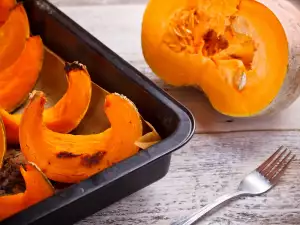
Pumpkin types
The family of the pumpkin includes squash, which ripens in late spring and early summer, their home is considered to be Central Asia. Two types of pumpkins are famous:
- Large white pumpkin.
- Muscat yellow pumpkin.
They come from South and Central America, respectively. The fruits are very large, and the crust - thick and stiff. However, the core is very tasty.
Selecting and storing pumpkins
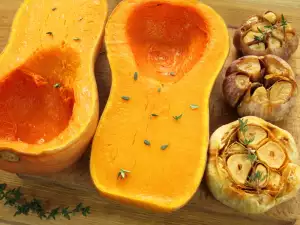
According to experts, white pumpkins are top quality. You will recognize them by their gentle flesh and a thin crust. When choosing a pumpkin from the market, especially if the fruit is cut into pieces, make sure the surface is wet and flat, with a bright color. Otherwise, the pumpkin is fresh and the taste is highly degraded.
If the pumpkin is very bright, perhaps it was detached before maturing and will have an insipid taste. When choosing a pumpkin, make sure it is ripe, but not too old. The most pleasant variety for eating and cooking is white pumpkin, with a thin crust.
Usually, you can keep the whole pumpkin for up to two weeks at room temperature in a cool, dark, well-ventilated place. Both types can be stored for several months in a cool, dark place.
To store the pumpkin, cut it into pieces and place in the refrigerator. Up to two or three days in advance, wrap it well in foil. The most suitable temperature for storage is from 1 to 14 º C and below 0 is detrimental to its nutritional properties. If you still want to freeze pumpkin, peel and cut it into pieces in advance.
Cooking with Pumpkin
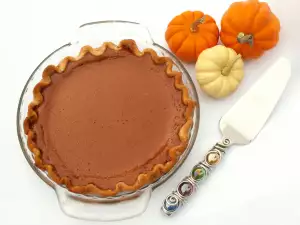
Pumpkin has a wide culinary use - for both savory dishes and cakes. Americans are passionate fans of pumpkin, it is a traditional feature in their cooking. It is commonly used in sweets, while the French cook it into salty pies and other baked goods. Pumpkin is often only eaten baked or boiled. It is widely used for the preparation of pies, cream, cake, pudding, buns, cakes, soups and more.
For optimal extraction of culinary and nutritional properties of pumpkin, it must be prepared properly. Aggressive cooking kills many of the vitamins and minerals in the pumpkin. You should prefer to bake your pumpkin, because the nutrients and structure of the pumpkin will dissolve.
Benefits of Pumpkin
With its rich content of vitamins C, B, A, D, E and even Vitamin T, pumpkin is able to help in weight loss by preventing the accumulation of fat. Eat pumpkin on a regular basis during the winter months, for the good of your immune system. It improves the condition of skin and hair, works well on the nervous system and normalizes sleep.
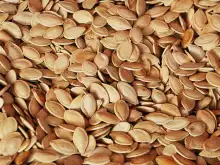
Drink pumpkin juice for sleeping disorders. If you add pumpkin juice, lemon, honey and hot water together, you will get a good remedy for stress. Pumpkin juice is good for vision problems because of its content of pro-b vitamin A and beta carotene, which is in greater quantities in them even than carrots.
The main health benefits of pumpkin are associated with cardiovascular disease, diseases of the kidney and urinary tract problems with urinary and digestive systems, and high cholesterol. Sometimes, you may have a slight laxative effect and it responds well to constipation.
Pumpkin reduces swelling and water retention in the body, responds well to diabetes. People with gastritis, ulcers, colitis and hepatitis should regularly eat pumpkin. Pumpkin seeds contain important for the body essential amino acids. They relieve the main symptoms in adenoma or inflammation of the prostate, frequent pain during urination, and more. Moreover, the seeds are rich in protein, vitamins and minerals like iron, zinc, copper and phosphorus. 100 g of pumpkin seeds contains 46.1% of our daily supply of magnesium.
Compresses of pumpkin help with eczema, wounds and rashes. Water from boiled pumpkin is used in healing folk medicines for soothing the nerves and bettering sleep. Do not overlook the regular consumption of pumpkin seeds, which are particularly useful for prostate problems, osteoporosis, inflammation of the liver and worms.
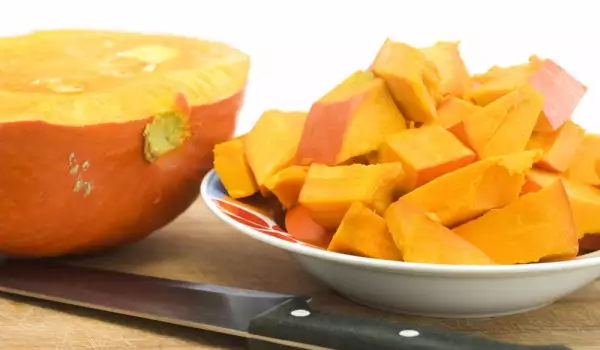
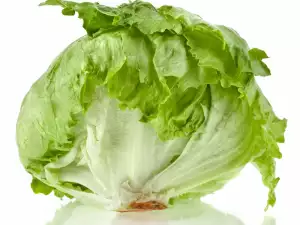
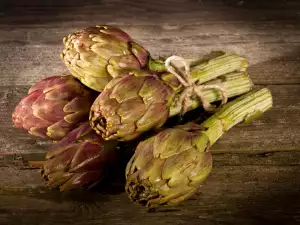
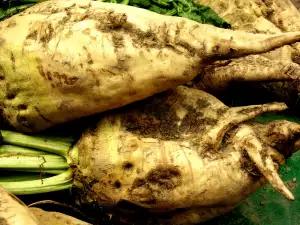
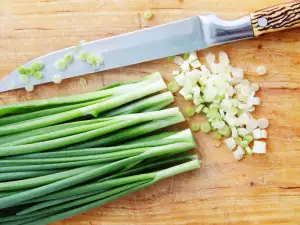
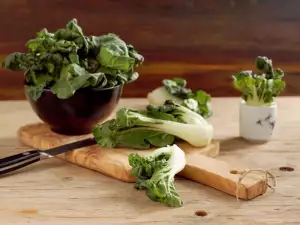


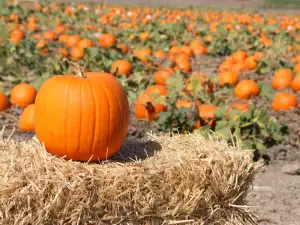
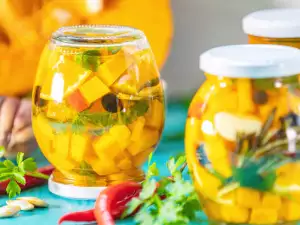
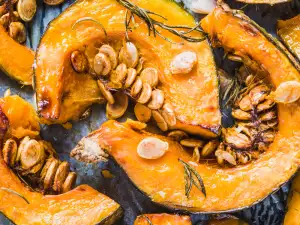
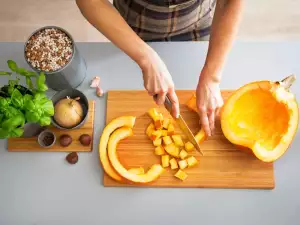
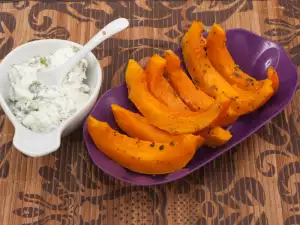
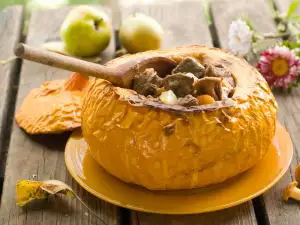
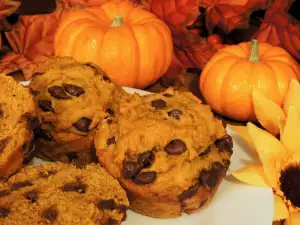
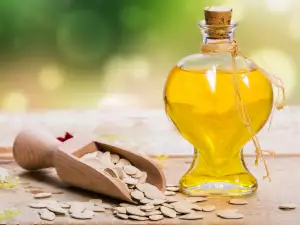




Comments